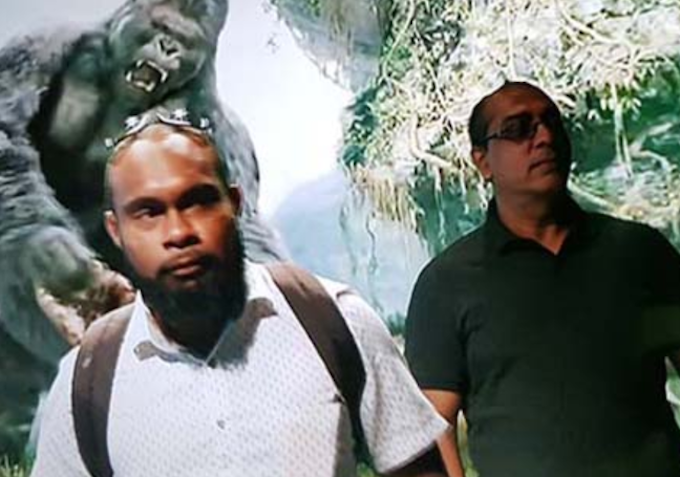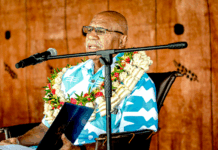
By David Robie
Pacific journalism educators are worried that the global covid pandemic has threatened media development programmes in a vast region of island microstates at a time when expertise in health and climate change reporting has never been greater.
The news media industry in some countries has recognised this need and is trying to boost resources and human skills.
New Zealand, for example, earlier this year unveiled a $50 million plan to help the local media after it suffered a huge hit after the start of the pandemic last year with a massive layoff of journalists and a closure of publications, especially magazines.
One of the innovative features of a new initiative announced by Broadcasting and Media Minister Kris Faafoi, himself a former journalist with Pacific heritage from Tokelau, is a Public Interest Journalism Fund with one of its targets being to assist indigenous Māori, Pasifika and “diverse voices” journalism.
The fund will finance an ambitious Te Rito programme to train 10 Māori and five Pacific Islander journalists a year in digital, broadcast and print media in an industry partnership established under the umbrella of the Treaty of Waitangi partnership.
Other programmes in the Pacific also assist journalism development, such as the United States and Philippines-based Internews/Earth Journalism Network, which trains journalists in climate change skills and strategies and publishes their work.
Ironically, while these developments have been unfolding, Pacific journalism education has gone into retreat since the covid crisis began.
‘A cruel irony’
While New Zealand has the largest metropolitan Pacific Islands population in Oceania with more than 381,642 comprising 8.1 percent of the total 5 million (according to the 2018 census)—matched only by Fiji (890,000) and Papua New Guinea (8.8 million)—none of its six journalism schools cater specifically for Pacific Islands media students.
A decade ago, the country’s largest media school, Communication Studies at Auckland University of Technology, boasted both a Graduate Diploma in Pacific Journalism catering especially for the country’s independent Pasifika news media industry and a Pacific Media Centre (PMC) research and publication unit.
But the diploma programme was phased out four years ago and the PMC, which ran an award-winning Bearing Witness climate change journalism and documentary making programme with partners in the Pacific under a “voice of the voiceless” banner, was left in limbo by the school management this year after the founding director retired at the end of last year.
“It’s a cruel irony that at a time when Pacific journalism is at the crossroads—if not on its knees—and needs to be better understood to be helped and strengthened to face new challenges, specialised Pacific journalism and research programmes in one of the centres of excellence in the region face an uncertain future,” said Fiji journalism educator and Associate Professor Shailendra Singh. “It just feels sad and surreal.”
Dr Singh’s own institution, the Suva-based 12-nation regional University of the South Pacific has just embarked on an innovative new programme, a BA degree in communication and media with options in business and marketing.
Media analyst Dr Gavin Ellis, a former editor-in-chief of The New Zealand Herald, argued in his weekly Knightly Views column that the PMC ought to be “re-established as a stand-alone trust”.
“It should continue its original remit … It may be time, however, to find a new university or industry partner,” he added.
Urged renewed commitment
The Australia Asia Pacific Media Initiative (AAPMI) lobby and training group wrote to the AUT university’s vice-chancellor and unsuccessfully urged the institution to renew a commitment “at a time when Pacific journalism is under existential threat and Pacific programmes suffer from under funding”.
This retreat on campuses has contrasted with renewed energy by the New Zealand media industry to boost Māori and Pacific journalism to provide better cultural “balance” in the legacy media.
In July, the new $55 million Public Interest Journalism Fund over three years unveiled its first cycle of grants for stories examining a wide range of community issues—such as an in-depth revisiting of a documentary, Inside Child Poverty, made a decade earlier with considerable impact.
The fund also provided $2.4 million for the setting up of Te Rito, the first comprehensive kaihautū, or journalism cadetship scheme for Māori, Pacific and “other communities traditionally under-represented in media”.
A significant feature of this scheme is the unprecedented collaboration between Māori Television, a state-funded public broadcaster; Pacific Media Network (PMN); Newshub-Discovery Channel; and New Zealand Media and Entertainment (NZME), the country’s largest print and oneline publisher.
PMN chief executive Don Mann welcomed the collaboration, saying it aligned with his organisation’s mandate to help train a “pipeline of excellent Pacific broadcasters and multimedia journalists”.
He added: “Te Rito provides sustainability in provision of best-practice Pasifika multilingual journalism but, more importantly, it allows the network to play our part in rectifying the significant under-representation and imbalance within the journalism sector on behalf of the Pasifika community.”
Critical shortage
Māori Television head of news and current affairs Wena Harawira echoed this view, saying the partnership would address the critical shortage of te reo Māori speaking journalists.
“It’s incredibly important that New Zealand’s journalism landscape is rich with Māori stories created by Māori, in te reo Māori, for everyone,” she said.
Te reo Māori is one of New Zealand’s three official languages – the others being English and sign language. But while Māori make up 16.5 percent of the population, only 4 percent of the country speaks te reo fluently, although its popularity is growing fast.
News media carried advertisements this month to recruit a Te Rito project manager who would be given “a unique opportunity to shape the future of journalism” in New Zealand.
Educators hope that universities take the cue and renew their earlier support for diversity journalism.
First published by In-Depth News (IDN), the flagship agency of the nonprofit International Press Syndicate. This is published as a collaboration between IDN and Asia Pacific Report. The writer, Dr David Robie, is editor of Asia Pacific Report, founding editor of Pacific Journalism Review and former director of the Pacific Media Centre.













































